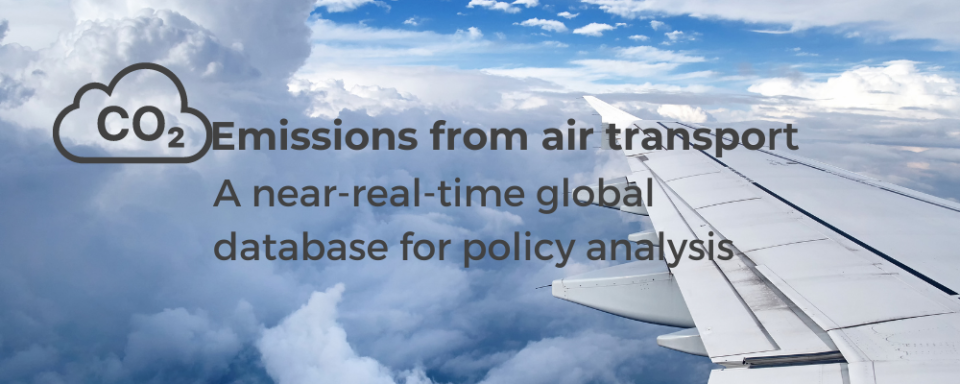CO2 Emissions from Air Transport: OECD methodology provides new perspective for emissions statistics with global coverage

Air transport facilitates international trade and tourism and contributes to economic growth and job creation, but it also produces carbon dioxide (CO2) emissions that contribute to global warming. The Organisation for Economic Cooperation and Development (OECD) has developed a new database using a near real-time data source from the International Civil Aviation Organisation (ICAO) to produce estimates of CO2 emissions from air transport. The new estimates have global coverage and ensure a consistent allocation of CO2 emissions across countries.
The data and methods are described in an OECD Working Paper published in March. The paper also discusses the use of the new CO2 emissions estimates as an input into international compilations of air emission accounts (AEAs).
Before the COVID-19 pandemic, air transport was one of the fastest growing sources of global CO2 emissions. In 2019, global CO2 emissions from domestic and international aviation were roughly similar to the total energy-related CO2 emissions of Japan and accounted for 5% of all energy-related CO2 emissions from OECD countries.
Share of (domestic + international) aviation in total energy-related CO2 emissions, 1971-2019
Note: CO2 emissions from international aviation were added to OECD and World (excluding OECD) totals before calculating shares.
Source: International Energy Agency (IEA), authors’ calculations.
The OECD database allows tracking of aviation-related CO2 emissions at monthly frequency from 2019 onward. At the height of the pandemic, in April-May 2020, global emissions were 75% lower than in the corresponding period of 2019. They have progressively increased since then, but still in December 2021 global emissions remained 30% lower than in December 2019.
CO2 emissions relative to the same month of 2019, World and OECD countries, January 2020 – December 2021
Note: CO2 emissions in the same month of 2019 are scaled to 100.
Source: OECD database on Air Transport CO2 emissions, authors’ calculations..
Although the pandemic has had a big impact on international passenger travel, the most recent data suggests that emissions from air transport are now increasing. Moreover, projections by the International Transport Forum show that, in the absence of accelerated technological developments and more ambitious policy measures, aviation-related CO2 emissions will increase by two and a half times between 2015 and 2050.
The OECD’s new CO2 emissions statistics for air transport contribute to the development and international compilation of AEAs according to the SEEA. For example, they are a source for validation of national estimates and for the conversion between the inventories and national accounts bases of emissions reporting. The AEAs are compiled on a residence basis. By contrast, the air emission inventories provided by the UN Framework Convention on Climate Change (UNFCCC) use a territory perspective. The new OECD database records emissions from air transport on both bases, so the information can be used both by compilers of UNFCCC inventories and those working on the AEAs, and for the conversion between the two types of emissions reporting.
One obstacle to the wider use of AEAs is their limited implementation outside the European Union. In order to scale up the compilation of these accounts, the OECD developed AEA estimates starting from UNFCCC inventories. The OECD database on CO2 emissions from air transport is an important contribution to the development of global AEAs according to the SEEA.
Read the paper CO2 Emissions from air transport A near-real-time global database for policy analysis.
Promotional video in Twitter.
